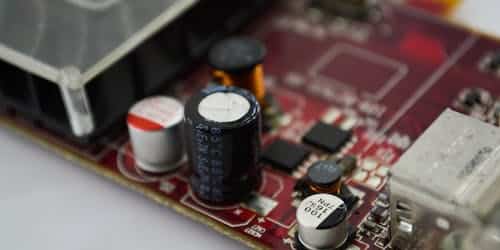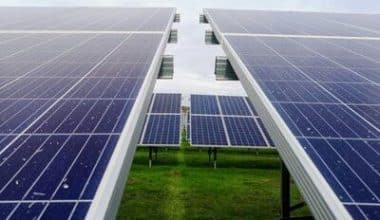It’s difficult to imagine going a day without power in today’s world. Electricity-powered devices can meet some of our most fundamental needs. Backup power sources are critical for our survival because they keep critical appliances and machines running in the event of a power outage. For many years, generators were the go-to backup option, but an inverter battery is quickly gaining popularity due to their advanced technology.
The inverter is important, but the battery is what does all of the work, and the inverter battery storage is critical. In this article, we will give you the best 8 inverter batteries in Nigeria, their components, why you should get the best inverter, tips on how to maintain them and how to extend your battery life.
Definition of Inverter Battery
An inverter battery is intended to provide a small but consistent current over a long period of time. All power backup solutions, such as inverters and UPS systems, work by converting direct current (DC) into alternating current (AC), which is what all of our electrical appliances require to function. The best inverter battery’s primary function is to regulate the supply of electric charge. We provide a diverse selection of the best inverter batteries, allowing you to select the one that best meets your requirements.
Types of Inverter Batteries
Inverter batteries can be broadly categorised into three types based on the plate technology used.
#1. Flat Plate Battery
The shape of the plates on this battery gives it its name. This battery’s positive and negative plates are both geometrically flat in shape. Acid is the electrolyte used. As a result, it is essentially a lead-acid battery. These batteries are less expensive but have a shorter lifespan. Aside from that, they charge at a faster rate. As a result, these batteries are ideal for situations where there are frequent and brief power outages.
#2. The Tubular Battery
These batteries have a tubular positive plate and a flat negative plate. The name comes from the tubular plate. The tubular structure of the positive plate of this type of battery provides extra support for active chemical components.
These batteries are typically larger than flat-plate batteries and come in two sizes: short and tall. Tall tubular batteries are taller than they are wide, while short ones are the opposite. These are more durable, have a longer service life, and are regarded as the best batteries for areas with frequent and long power outages.
#3. The Gel Battery
Lead-acid gel batteries get their name from the crisscross gel structure that holds the acid and prevents it from settling. In addition, they have more backup power than standard flooded lead-acid batteries.
The main advantage of a gel battery is that it requires no maintenance and emits far fewer fumes than other batteries, making it completely non-toxic. There is also no danger of acid spillage. As a result, it has earned a reputation as a maintenance-free inverter battery. The only disadvantage is that it does not have the same lifespan as a tubular battery.
8 Best Inverter Batteries In Nigeria
The following is a list of the best inverter batteries on the market.
#1. Luminus Inverter Battery
The Luminus battery is among the best in the industry. It starts with a synchronised changeover, which allows the user to enjoy a continuous power backup for their home appliances or in their offices. Because of specially created engines, it has a dependable and continuous power supply. It has the most up-to-date technologies manufactured directly in India, with products that will ensure a trouble-free application and high efficiency.
#2. Battery Prag Tubular Inverter
Prag Tubular is another well-known battery-producing company whose services have been widely accepted as being among the best. PRAG tubular inverters have the following advantages:
- Premium Selection
- a difficult situation
- More electrolyte per ampere hour for longer life
#3. Rita Inverter Battery
Rita Batteries is a company known for its high-tech products, which makes it a battery manufacturing company. With its full range of options, such as lead carbon, OPzV, AGM, and all other types of electrical applications, the company has been able to produce each one to suit the preferences of its users. It’s no surprise that their products are among the best on the market because they meet the global standard for batteries.
#4. Gaston Inverter Battery
In case you need an extra boost in terms of battery performance and longevity, look no further. The Gaton Battery trademark is a well-known brand that is known for providing its customers with the exact service that they require. You will have years of uninterrupted power backup with this battery, with no need for replacement.
#5. Amaron Quanta Batteries
Amara Raja of India is at the forefront of developing batteries that offer their users top-notch service and applications. They have maintained this act for years, providing the best products while also serving as life support for their users in all walks of life. UPS manufacturers, banks, IT companies, BPOs, industries, government departments, hospitals, and educational institutions all prefer Amaron Quanta batteries.
#6. Battery Exide Inverlast Tubular
Exide inverter batteries are a well-known brand known for producing high-quality, long-lasting batteries. They have been in business for over 40 years (including during World War I) and have a track record of providing their customers with vest products that are suitable for their needs, including submarine use. Exide manufacturers began to build more products that would serve specific needs for their customers in their homes, establishments, schools, or organizations as the demand for their services increased.
#7. Plus Tubular Ride
Su-Kam power system created a new brand, which has evolved using new technological advancements to create advanced inverter batteries that are suitable for a variety of needs in offices and establishments.
#8. Battery for Mercury Inverter
Kobian Pte. Ltd. is the manufacturer of Mercury inverter battery brands. Which is widely regarded as one of the world’s leading battery manufacturers. Their backup power creations are among the most trusted in the market for providing their clients with the service and satisfaction that they require for their various services. With their ability to serve multiple functions, mercury brands are very affordable, and in most cases, their prices do not reflect the quality of services their batteries provide.
Why Is It Important to Select the Best Inverter Battery?
Batteries for inverters are essential in the design and installation of inverters. It is essentially the powerhouse that allows for the storage or use of electricity via an inverter. In the case of a solar inverter, the batteries are kept inside your home. They are harmless and will not harm your property. There has been very little written about electrical surges caused by inverter batteries.
For centuries, battery technology has been evolving. Batteries are now used for a variety of purposes and as alternative power sources. Despite changes in design, modern inverter batteries retain all of their functionality. Choose a dependable and long-lasting brand if you intend to use your inverter batteries for an extended period of time. Furthermore, select a low-cost battery from Nigeria’s best inverter battery prices.
Components of Inverter Battery
Batteries are devices that use a cell to convert chemical energy into electrical energy. A cell is a special arrangement of all the battery’s components. The components include:
#1. Electrolyte
The electrolyte is critical in wet-cell batteries because it aids in the chemical reaction that generates electricity. Wet cells and sealed batteries are the two lead-acid batteries that use an acidic electrolyte. Wet cell batteries use a liquid electrolyte, whereas sealed batteries use a gel or liquid electrolyte absorbed in fibreglass mats.
#2. Terminals
The terminals are lead on the negative side and PbO2 on the positive side, both of which are built as plates. Because of the acid electrolyte and lead plates, wet-cell batteries are lead-acid.
#3. Separators
Separators are essential components of batteries because they prevent short-circuits by physically separating the positive and negative plates. The majority of separators are made of rubber, which is more stable in battery acid and offers valuable electrochemical benefits that other materials do not.
#4. Displays, LED lights, and alarms
Users can learn about the status of their batteries by using displays, LED lights, and alarms. By displaying this information, users can make informed decisions about when to charge or replace their batteries. These functions are frequently integrated into inverter systems or battery chargers.
#5. Circuits Based on Microprocessors
Microprocessor-based circuits are essential for charging regulation in inverter systems and battery chargers. They aid in the regulation of charging and the smooth operation of the system. It would be easier to ensure that batteries are properly charged and inverter systems are operational with them.
How Long Do Inverter Batteries Last?
The time it takes for an inverter battery to last depends on several factors, including its size, working temperature, construction, how much energy is regularly drawn out, and how old it is. If you ask, “How long will a fully charged 150Ah battery last?” The answer is a little more direct.
A fully charged 100Ah battery will last for 20 hours with a constant 5A load before needing to be recharged (which is impossible in real life).
For this, the calculations are quite simple. The following equation should be used:
C * Vavg = E
Where E denotes the amount of energy stored in watt-hours, C is the amount of capacity in amp-hours, and Vavg is the average voltage during discharge.
How to Care for Your Inverter Battery
An inverter and its battery, like any other home appliance, require routine maintenance to function properly and safely. To ensure optimal performance, we recommend that you inspect your inverter battery every three months. The following are some inverter battery maintenance tips.
#1. Only Check the Battery When It Is Fully Charged
Before inspecting the health of your inverter battery, make sure it’s fully charged. To do this, charge it for 10 to 15 hours with a suitable inverter or external charger. When the inverter is fully charged, you can remove it from the front panel and detach it from the wall socket.
#2. Examine the Acid Level
Examine the float indicators to determine the acid level. Each cell in an inverter battery requires the same level of acidity to function properly. Open the vent plugs or float indications and examine the acid colour to determine the battery’s health. If the acid is colourless, the battery is in good condition. If the acid is brown or black, the battery is contaminated or has reached the end of its useful life.
#3. Ensure That the Battery Terminal Area Is Clean
During normal operation, inverter batteries produce lead sulfate, which can accumulate and obstruct electrical current flow at the battery-inverter connection. Clean the battery with warm water and a nylon brush to remove any lead-sulfate buildup.
#4. Maintain a Clean Battery Surface
Check for dirt buildup on the surface of your battery to ensure it is working properly. If dirt is present, try cleaning it with a dry cloth to keep the battery clean and in good working order.
Why Do Inverter Batteries Fail Before They Should?
Excessive use of your inverter can reduce the life of your battery. When batteries are overworked, they work harder and wear out faster. During a power outage, your inverter draws energy from batteries and uses it to power electrical and electronic devices. Running multiple devices during a power outage consumes more battery power and causes the batteries to wear out faster.
#1. Inverter Battery Overcharging
If your battery becomes overheated, it is overcharged and will fail sooner than expected. When an inverter battery is overcharged, the battery plates corrode, resulting in the battery failing prematurely.
#2. Lack of Consistent Maintenance
Regular maintenance and storage will deteriorate your inverter battery. Rust, corrosion, and dryness all reduce current flow to and from the battery, resulting in a slow battery charge and shorter battery life. Batteries must also be topped up with distilled water regularly and cleaned. If this is not done, the battery plates will dry out, resulting in the battery failing.
How Do You Extend the Life of an Inverter Battery?
The proper charging of an inverter battery ensures peak performance. Avoid undercharging and overcharging. Overcharging weakens the battery’s internal structure, while undercharging reduces its lifespan. You must know the correct voltage for your battery and charge it at the intervals recommended by the manufacturer.
Most deep-cycle batteries require a certain number of discharge and recharge cycles to perform optimally. After about ten cycles, the battery should be considered broken. After about ten thousand charging cycles, the quality begins to deteriorate. When the charge cycle allows it, it is best to perform an occasional full charge.
When the Inverter Is Turned On, It Makes a Noise. Is This Typical?
This is the sound of the battery converting current, so there is nothing to be concerned about. If you notice any other unusual sounds, contact your electrician or the company so that they can assist you.
Can I Use the Battery to Charge My Solar Panel?
Some say yes, while others say no. First, check to see if your inverter is designed to be charged using solar power.
How Will I Know When My Inverter Battery Has Been Fully Charged?
Inverters have indicators that alert the user when the inverter is fully charged; typically, this is visible on the front surface. Other inverter models use overcharge protection and alarms to draw the user’s attention.
Who Does the Inverter Installation?
Companies do not install inverters in customers’ homes; instead, they provide a product warranty. If you are unsure how to install it on your own, you can always seek the assistance of an electrician.
What Exactly Is a “Hassle-Free Water Level”?
The water level is displayed as an indicator on the inverter. This is your battery’s water level, which measures its efficiency.
Conclusion
It is critical to choose the appropriate inverter and battery for the best backup power solution. The battery type is one of the most important factors to consider when purchasing a home inverter battery. There are various types of inverter batteries available for various applications. Some products may be more expensive than others due to their specifications and features.
- Inverted Yield Curve: All you Need to Know With Detailed Analysis (+Examples)
- Business Model: Definitions, Examples, and Types
- BEST TRAVEL LAPTOP FOR BUSINESS IN 2023
- 2023 BEST BUSINESS LAPTOPS: Top Picks
- 2023 BEST 15+ WIRELESS SECURITY CAMERA SYSTEMS FOR BUSINESS (Updated)






